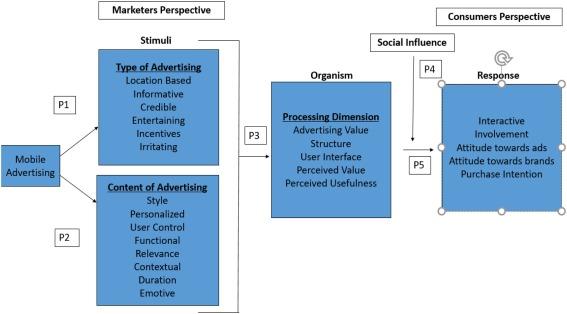How to Become a Multimedia designer: Education Requirements and Career Paths
Introduction
Are you passionate about combining creativity with technology to shape engaging learning experiences in education? Becoming a multimedia designer in educational technology could be the ideal path for you.As the demand for innovative digital learning resources grows in universities, colleges, and schools, multimedia designers play a vital role in crafting visual and interactive content that supports effective teaching and learning. In this extensive guide, discover the essential education requirements, necessary skills, career paths, and insider tips for landing a rewarding job as a multimedia designer in education technology.
What Does a Multimedia Designer Do in Educational Technology?
Multimedia designers working in the education sector are specialists who develop and integrate graphic design, animation, video, audio, and interactive media to produce compelling instructional materials. These professionals collaborate with instructors, e-learning developers, and IT teams to enhance the digital classroom, support online courses, and create visually rich presentations and resources.
- Designing interactive modules and educational games for e-learning platforms
- Producing instructional videos,podcasts,and animations
- Developing infographics,diagrams,and study aids
- Improving user experiences on online learning systems
Education Requirements for Multimedia Designers in Education
If you’re aiming to become a multimedia designer in a university,college,or school setting,meeting certain educational requirements is essential. Although entry requirements can vary by institution, most employers seek candidates who possess a blend of creative and technical qualifications.
bachelor’s Degree
A bachelor’s degree is usually the minimum education requirement. Relevant majors include:
- Graphic Design
- Multimedia Design
- Digital Media
- Visual Arts
- Interaction Design
- Instructional Design (with strong multimedia coursework)
Relevant Coursework
Seek programs that offer coursework in:
- Digital illustration and image editing
- Animation and motion graphics
- Video and audio production
- Web design and advancement
- Human-computer interaction
- E-learning authoring tools (such as Articulate Storyline or Adobe Captivate)
Optional: Master’s Degree and Certifications
For leadership or specialized roles, a master’s degree in digital media, instructional technology, or related fields can make your application stand out. Additionally, certifications in widely-used software (like Adobe Creative Suite) or instructional design can elevate your expertise.
Essential Skills for Multimedia Designers in Education
To succeed as a multimedia designer, you’ll need a mix of creative, technical, and interpersonal skills. Here are some key competencies employers are looking for:
- Visual design: Eye for color, typography, composition, and branding
- Technical proficiency: mastery in tools such as Photoshop, Illustrator, After Effects, Premiere Pro, and e-learning authoring software
- Animation skills: Ability to create motion graphics and interactive content
- Audio and video editing: Experience with editing and enhancing multimedia assets
- Web development basics: Familiarity with HTML, CSS, and content management systems
- Project management: Capable of managing multiple projects and deadlines
- Collaboration: Able to work with educators, technologists, and subject-matter experts
- Instructional design knowledge: Understanding how multimedia enhances learning outcomes
Career Paths: Where Multimedia Designers Work in Education
multimedia designers can pursue careers in a wide range of educational environments:
- Universities and Colleges: Creating online courses, lecture support materials, and recruitment campaigns
- K-12 Schools: developing digital resources for classrooms, after-school programs, or district curriculum teams
- Online Learning Companies: Designing e-learning modules for educational publishers or edtech startups
- Instructional Technology Departments: Supporting faculty with training and digital course content
- Continuing Education and Professional Training: Producing corporate or adult learning materials for workshops and online seminars
Common Job Titles
- Multimedia Designer
- instructional Multimedia Designer
- Digital Learning Designer
- eLearning Developer
- Educational media Specialist
- Learning Experience Designer
Benefits of a Multimedia Designer Career in Education Technology
A career as a multimedia designer in education technology offers unique advantages for creative and tech-savvy professionals:
- Meaningful work: Directly contribute to student engagement and academic success
- Innovation opportunity: be at the forefront of new learning technologies and media trends
- Collaborative environment: Engage with diverse teams across academia, IT, and design
- Career variety: Work on projects ranging from online courses to interactive exhibits
- job stability: high demand in schools and higher education as online learning continues to expand
- Professional growth: Chances to upskill through workshops, conferences, and certifications
How to Start Your Multimedia Design Career in Education: Practical Tips
Successfully landing a multimedia designer job in educational technology calls for more than a degree. Here are practical steps to kick-start your journey:
- Build a strong portfolio: Create a digital portfolio that highlights your best multimedia projects, especially those related to education or training.
- Gain relevant experience: Volunteer for school projects, internships, or freelancing opportunities in educational media.
- Learn popular e-learning tools: Get hands-on with software like articulate Storyline,Adobe Captivate,or Camtasia,which are in high demand.
- Network in the education sector: Attend edtech conferences, join professional groups, and participate in online forums.
- Stay current with trends: Regularly update your skills on emerging technologies such as AR, VR, and gamification in learning.
- Tailor your resume: Emphasize experience with educational projects and the impact of your work on learning outcomes.
- Prepare for interviews: Be ready to discuss your design process, collaboration skills, and how your multimedia solutions address diverse learner needs.
Conclusion
The demand for creative, tech-savvy professionals in educational technology is on the rise, and multimedia designers are at the heart of this digital transformation. With the right education, robust portfolio, and a passion for enhancing learning, you can thrive as a multimedia designer at universities, colleges, or schools. Start building your career today, and help shape the future of education through innovative multimedia design.

